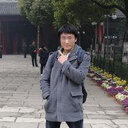Targeting tumor hypoxia with 2-nitroimidazole-indocyanine green dye conjugates.
Nyckelord
Abstrakt
Tumor hypoxia is a major indicator of treatment resistance to chemotherapeutic drugs, and fluorescence optical tomography has tremendous potential to provide clinically useful, functional information by identifying tumor hypoxia. The synthesis of a 2-nitroimidazole-indocyanine green conjugate using a piperazine linker (piperazine-2-nitroimidazole-ICG) capable of robust fluorescent imaging of tumor hypoxia is described. In vivo mouse tumor imaging studies were completed and demonstrate an improved imaging capability of the new dye relative to an earlier version of the dye that was synthesized with an ethanolamine linker (ethanolamine-2-nitroimidazole-ICG). Mouse tumors located at imaging depths of 1.5 and 2.0 cm in a turbid medium were imaged at various time points after intravenous injection of the dyes. On average, the reconstructed maximum fluorescence concentration of the tumors injected with piperazine-2-nitroimidazole-ICG was twofold higher than that injected with ethanolamine-2-nitroimidazole-ICG within 3 h postinjection period and 1.6 to 1.7 times higher beyond 3 h postinjection. The untargeted bis-carboxylic acid ICG completely washed out after 3 h postinjection. Thus, the optimal window to assess tumor hypoxia is beyond 3 h postinjection. These findings were supported with fluorescence images of histological sections of tumor samples and an immunohistochemistry technique for identifying tumor hypoxia.



